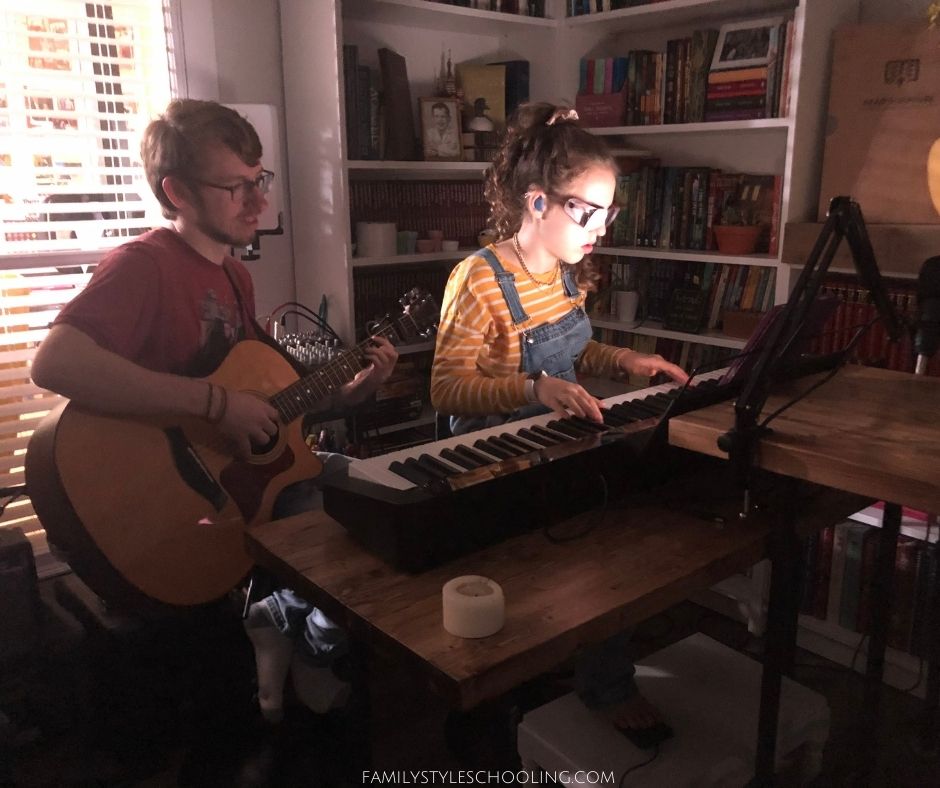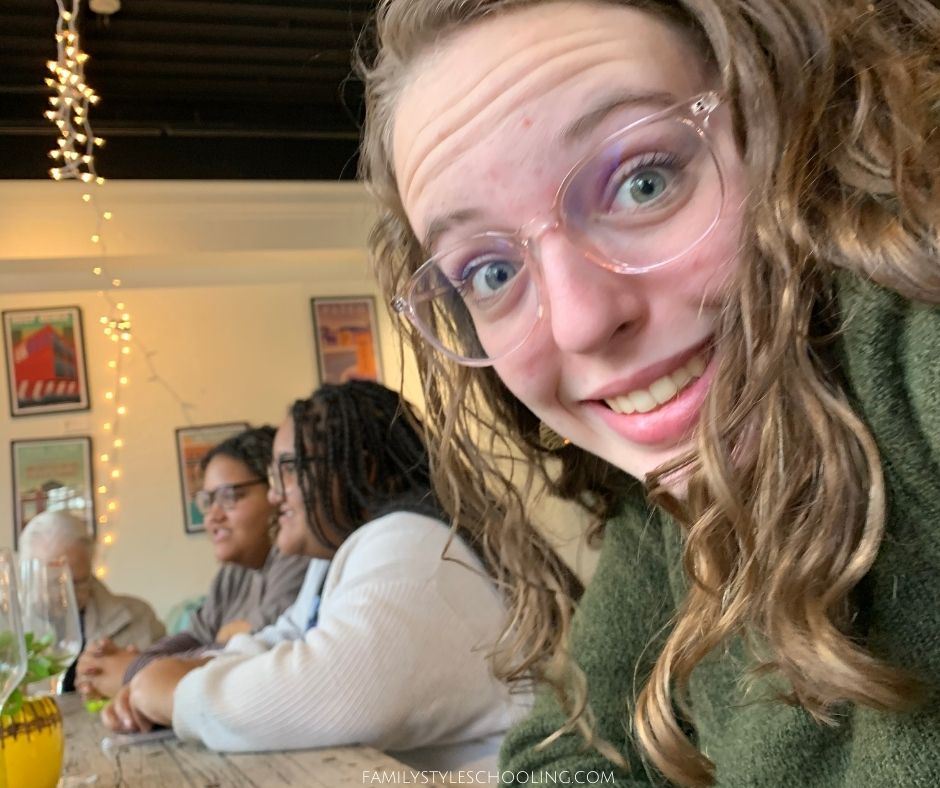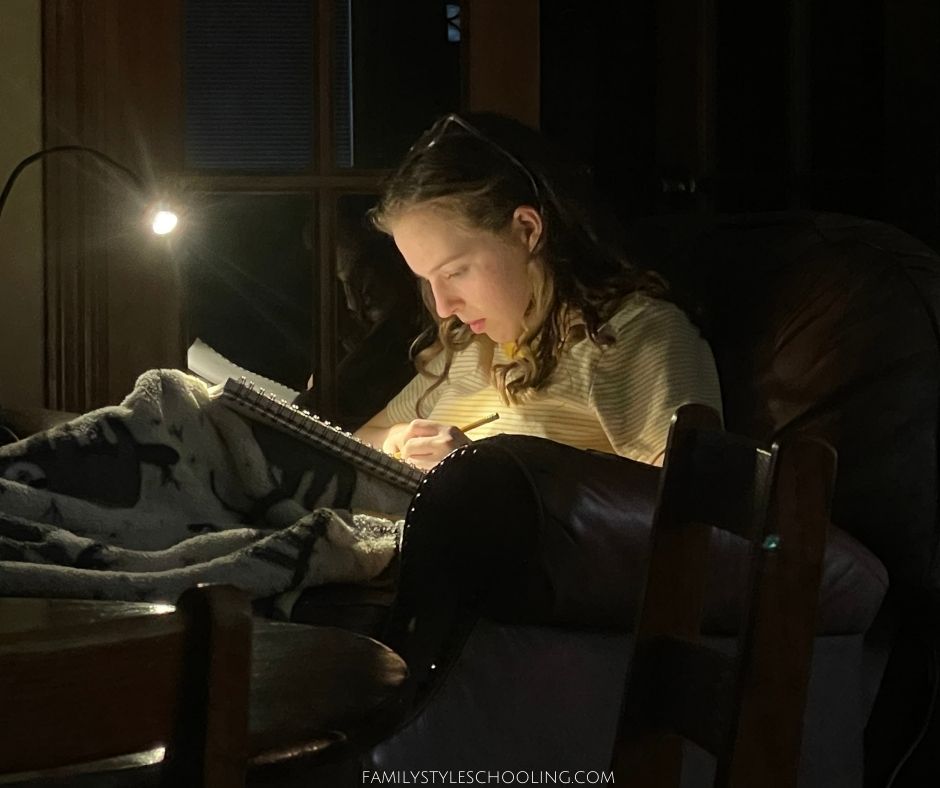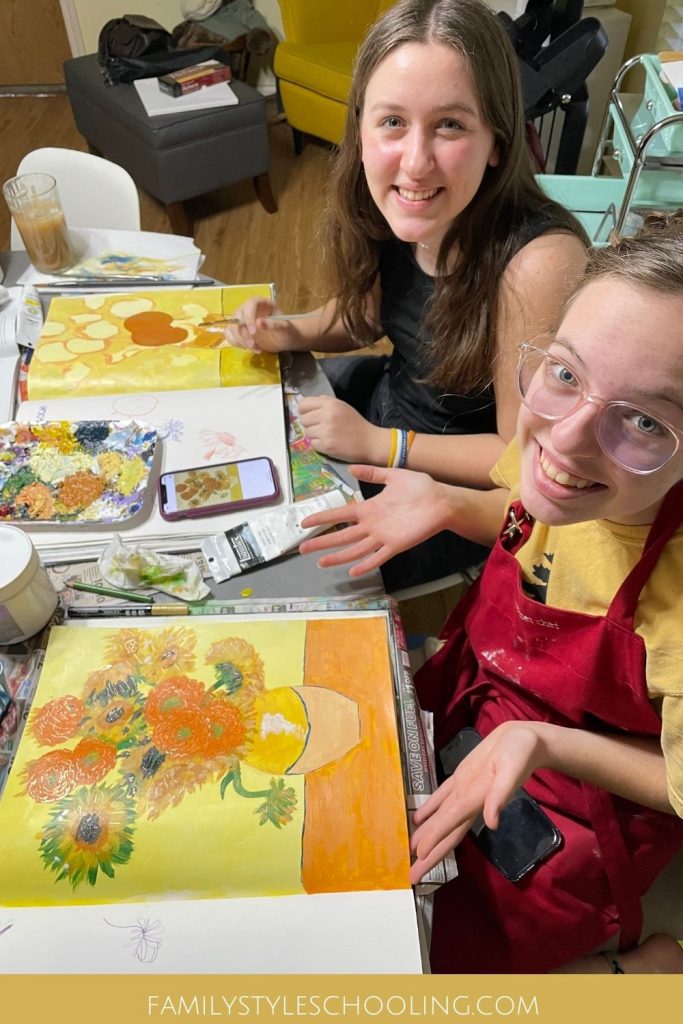How to Strengthen the Brain by Working the Body
Yesterday, I shared how God led me to Brain Sprints and working with a NeuroDevelopmental therapist to help my youngest (age 15) with her learning struggles. Today, I want to share with you our journey in working out the plan we were given.
I have a lot to say, so this will be a week-long adventure. If you missed the first in the series, you can read it here! Then I'm sharing the physical, mental, and spiritual aspects of our plan as well as practical ways that we organized our materials to stay motivated to keep working on the plan! So check back each day for more!
Just to recap, NeuroDevelopmental therapy focuses on the root causes of symptoms like dyslexia, ADD/ADHD, and other learning struggles. The premise is that if the brain skipped a step in early childhood development, there are gaps in the foundation. By strengthening the foundation, the brain becomes more organized, and the symptoms decrease.
Working a NeuroDevelopmental Plan
So we willingly submitted ourselves to a NeuroDevelopmental plan with the hopes that my daughter would be able to go to college one day without needing a label to get her accommodations.
I’m not going to lie: some days it felt like we were training for the Olympics. It’s not that any of the assignments were difficult—and that was the worst part, they weren’t! Just a few seemingly insignificant little two-minute tasks could exhaust us. The good news is that we’ve made it to the other side! We’re almost finished with her plan, and we are still alive!! AND I’ve seen so much growth in my daughter, I can hardly believe it actually worked.
Dr. Jan Bedell wasn’t surprised. She’s been doing this for over thirty years and has seen family after family helped with these NeuroDevelopmental therapies.
One more crazy note before I get into the details: my husband decided to do it too. Yes, you read that right. Dr. Jan assessed my husband as well, and he started a NeuroDevelopmental plan—not quite for the same reasons as my daughter did, but it has helped him too. Immensely. But that is another story for another day.
Where Do We Begin?
The beauty of a NeuroDevelopmental plan is that it is multifaceted, meaning, it works the problem from multiple angles: body, mind, and soul. With this diversified approach, the whole person is taken into account, and the variety of causes of disorganization and dysfunction in the brain can be accounted for and strengthened together.
I’ll be focusing on the activities assigned relating to strengthening the brain through the body today. Tomorrow, I’ll dig into more activities targeted at stimulating the mind and refreshing the soul.
Every person has such a unique plan—I discovered this when my husband also received a personalized NeuroDevelopmental plan. I assumed they’d be pretty similar when in reality very few activities overlapped. Since each person has unique struggles and unique history, their plan must be carefully crafted to suit them. If you, your child, or your husband could benefit from some brain training, which we all could, then your plan will probably be different than Audrey’s. Each plan covers four months of activities, and then you come back for a reevaluation and another four months of work. It typically takes at least twelve months to get the brain organized, but depending on the individual and the circumstances it can take longer.
One Key Factor: Buy-In
I want to pause here for a second. This program, or any like it, won’t work without willing participants. Audrey’s motivation paved the way for success. She simply submitted to the program trusting that some of the less-than-exciting activities would help her gain an organized brain.

There were times when she really struggled with discouragement, and in those times, she leaned into the Lord’s strength to carry her through. One of the best assignments Dr. Jan gave us was listening to an “I Am” list—what God says about who we are. These affirmations were powerful lights in the dark times.
I also needed buy-in. It felt a little risky to reorient our schooling to make our Brain Sprints activities a priority, but I decided that if we wanted to get the potential results, we would need to full-send.
We Were Not Perfect
Even with the desire and drive there, and even with my husband joining Audrey in the journey and the family rallying around Audrey, we still didn’t complete everything perfectly.
We started in April, which ended up being a great time for us because it was just as our regular school year was wrapping up. Even without school to get in the way, summer came with vacations and family visiting that we had to figure out a way to navigate.
We went back in August for our first assessment unsure if Dr. Jan would see any changes. She was blown away! Audrey made so much progress, and that encouraged us to continue.
With our second plan, I contracted Covid about three weeks in, and dad took over fully with Audrey’s plan. We held it together until November hit, and holidays and other travel made working the plan difficult.
Again, we went to the assessment unsure of what actually was accomplished. And again, Dr. Jan encouraged us with all of the progress we had made.
Perfection is not the goal, thankfully. And you don’t have to be perfect to get results. I will share those with you in a minute, but let’s get back to the actual plan.
Here’s where we started:
Organizing the Brain by Strengthening the Body
There are two main facets to brain training that require physical training: neurological organization through movement and developing a dominant hemisphere.
Neurological Organization through Movement
The way God designed babies to move is actually how all of the neuropathways are developed and strengthened. Linda Kane writes in It’s All About the Brain: Eradicating Dyslexia, ADD, and Other Learning Challenges, “Babies need to move. Every time they bang their hand or foot on a firm surface, they are sending signals to the brain, and with every signal sent, pathways to the brain are developed that will lay the groundwork of that child’s future learning, interaction, and achievement”(5).
For Audrey, this meant that areas like pencil grip, poor handwriting, or difficulty tracking on the page while she read, were all connected to underdeveloped neuropathways.
So we began working on those movements that you might see a baby doing on their back or stomachs. It is much easier to do these motions when you’re a baby. In the first four months, Audrey felt like she was getting a good core workout every morning!
After the first evaluation, Audrey shifted to army crawling and creeping forwards and backward. It is amazing how much you can over-think crawling! With practice, however, these activities began to become more natural, and surprising things like improved handwriting began to emerge. All of those neuropathways on her hands had finally been sufficiently stimulated to make all of the connections required for her brain to communicate with her hand. It was remarkable!
Not only that, but the cross patterns that she was practicing were helping the two sides of her brain work better together, allowing her to better organize and access the information that she was putting into it!
Strengthening Vision
I had no idea that there could be so many different ways to strengthen vision. While I know about correcting vision because I wear glasses, I didn’t realize that issues with the strength of the eye muscles could cause so many learning challenges.
When I started teaching Audrey to read, I would say, “You’re going to have more success if your eyes are actually on the page!” She would look everywhere except where she was supposed to be reading. Her eyes were just not working well together so looking at the page was torture.

We used pinhole glasses, an eye patch, spinning, and other activities to strengthen her eyes. At the beginning of our Brain Sprints activities, we would read together, and I would use the edge of a paper to help her track. It didn’t take long with the eye exercises for her to ditch the tracking tool because her eyes were working for her and not against her.
What is a Dominant Hemisphere?
I grew up with the idea of left/right-brained dominance and that establishing whether one was more analytical or more creative. Kane clarifies, “There are two hemispheres of the brain, popularly dubbed ‘left brain’ and ‘right brain.’ The hemispheres should more correctly be termed ‘dominant’ and ‘sub-dominant’”(10). She goes on to explain that the dominant hemisphere controls reading, writing, and speaking, while “the sub-dominant hemisphere directs creativity, music, and emotion”(10).
Let me slow down for a sec. This idea totally threw me off at first. Basically, a dominant hemisphere relates to how your brain takes in and processes information. It generally relates to handedness. If you’re right-handed, your right foot, eye, and ear should also be dominant.
When these things are not in line, you find challenges in processing information. Kane continues to explain, “The most prevalent symptom of mixed dominance is inconsistent recall of information. Quite simply, information that is not stored correctly will not readily be accessed”(32).
What this means is that if Audrey is left-handed and struggling with dyslexia, most likely her left eye is not her dominant eye. When she reads, she takes in information with her right eye, storing it in the sub-dominant part of her brain. Then it needs to be transferred to the dominant side of her brain, and in the process, she reverses letters and the information is completely disorganized.
Imagine the Frustration She’s Feeling
After having Covid last year, I experienced an unfamiliar scenario: struggling with recall. I felt like someone took an ax to the server room in my brain and severed the connections. My cousin asked me where we bought our new dryer, and my brain thought, “We have a new dryer?” That information became scrambled during my sickness.
My temporary frustration brought me newfound compassion for what Audrey’s been struggling with all of her life. If someone has mixed dominance, Kane continues, “If any pressure or stress is added to a person’s task, information will be nearly impossible to retrieve”(33). I have seen this happen time after time when I worked with Audrey. If I asked her to recall a concept we had just covered, she would freeze and be unable to remember.

The explanation for this frustrating phenomenon is this: “When a neurologically disorganized person is placed in stressful or testing situations, they go subdominant; meaning their emotions take over. In turn, this severely hampers or even denies them access to logical, analytical thought, reasoning, and memory. Altering your voice, even just a little bit in frustration because your child knew a math process all week but then forgot it on Friday, can send that child into the sub-dominant world” (Kane, 33).
Friends! This was my life! We were all frustrated.
Getting Her Brain Organized
It wasn’t actually clear from our first assessment which side of Audrey’s brain should be the dominant side. Audrey’s brain was very disorganized. So Dr. Jan recommended starting to work towards the left side (considering she was left-handed) and seeing if the body worked with that.
Some of our at-home assignments included wearing an eye patch a couple of hours a day to strengthen her left eye. She also wore an earplug all day in her right ear to strengthen her left ear. These two activities were probably the most uncomfortable of the assignments, but the short-term pain was worth the long-term gain!
Another item on our plan was working on dominant hand awareness. As she brushed her teeth, picked up a glass of water, or brushed her hair, she’d make sure to use her left hand and say out loud, “I brush my teeth with my left hand.” It felt a little silly, but she was telling her brain her intentions and it listened well!
At her initial assessment, her right ear was completely dominant, her eyes were completely mixed, her hand was mixed but mostly left-dominant, and her feet were mixed but mostly right-dominant. She was all over the place.
When we came back in August (remember that we were worried about our progress), her eye, hand, and foot were all fully aligned to the left! It was a miracle. Dr. Jan asked if we had been praying about this because she’d not seen the shift happen so decisively in such a short amount of time. Audrey's ear dominance had moved all the way to the center, which was a huge improvement.
But You Said You Were Worried About Progress
It is so hard to see growth when you’re deep in the trenches of the process. Each month we submitted our tracking sheets and a general assessment of how things were going. These were helpful in keeping our eye on the prize.
But the real growth comes after. Yes, she had amazing dominance alignment in August, but it wasn’t until late September that I realized that she had shifted to completing most of her other school work on her own. You’d think as a sophomore in high school, this would have already been a thing, but it wasn’t.

There was a blessing that came from my Covid fog: I couldn’t help her. Previously, if I had assigned her independent work, she would have crumpled in frustration. So I worked on assignments with her to manage the frustration level and help her brain access the information it needed to.
Now that her brain was taking in information properly, she found she could access it more easily and tackle those assignments on her own successfully!
Creative Capacities Unlocked
The most recent success she’s noticed is her ability to paint. If you’re worried that shifting dominance will make one completely logical and detached from their creative capacities, fear not! Since her eyes are stronger, she can attend to the details of what she’s trying to draw or paint. Because she can focus for longer, projects that might take longer than thirty minutes do not intimidate her.

In all of these newfound skills, she’s gained incredible confidence to learn anything. Recently, she found my husband’s Hebrew texts on the top shelf of the library and pulled them down. I found her in her room working through Hebrew vocabulary. Ancient Hebrew?! Teaching herself?!
Does it work? Welp, if I haven’t convinced you yet, check back tomorrow for more NeuroDevelopmental program insights. I haven’t even told you about strengthening the mind and soul.
If you think your child could benefit from a NeuroDevelopmental plan, you can schedule a free 15-minute consultation. This was very helpful for me in deciding how I could help Audrey in her journey.
Dr. Jan shares more great info on her YouTube and Rumble channels "Brain Coach Tips."
You can also talk to her in person at the THSC convention this year in Allen and The Woodlands as well as Teach Them Diligently in Roundrock.
Betsy Strauss is an unexpected homeschooler, mother of three, who is in a relationship with a sweet man for life. She loves reading books, drinking coffee, and learning anything with her kids.




So encouraged by Audrey’s success story. I have a question. I’m wondering if you ever looked into Dianne Crafts Brain Integration Therapy?INP sounds very similar to that.
Thank you
I haven’t heard of that! It does look similar, but just not as individualized. Thanks for sharing that resource!